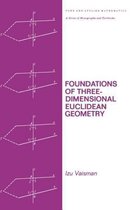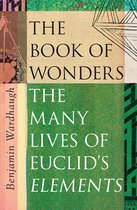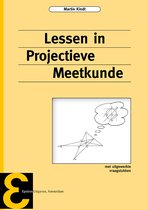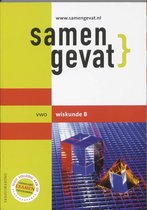The Four Pillars of Geometry
Afbeeldingen
Sla de afbeeldingen overArtikel vergelijken
- Engels
- Hardcover
- 9780387255309
- 09 augustus 2005
- 227 pagina's
Samenvatting
For two millennia the right way to teach geometry was the Euclidean approach, and in many respects, this is still the case. But in the 1950s the cry "Down with triangles!" was heard in France and new geometry books appeared, packed with linear algebra but with no diagrams. Was this the new right approach? Or was the right approach still something else, perhaps transformation groups?
The Four Pillars of Geometry approaches geometry in four different ways, spending two chapters on each. This makes the subject accessible to readers of all mathematical tastes, from the visual to the algebraic. Not only does each approach offer a different view; the combination of viewpoints yields insights not available in most books at this level. For example, it is shown how algebra emerges from projective geometry, and how the hyperbolic plane emerges from the real projective line.
The author begins with Euclid-style construction and axiomatics, then proceeds to linear algebra when it becomes convenient to replace tortuous arguments with simple calculations. Next, he uses projective geometry to explain why objects look the way they do, as well as to explain why geometry is entangled with algebra. And lastly, the author introduces transformation groups---not only to clarify the differences between geometries, but also to exhibit geometries that are unexpectedly the same.
All readers are sure to find something new in this attractive text, which is abundantly supplemented with figures and exercises. This book will be useful for an undergraduate geometry course, a capstone course, or a course aimed at future high school teachers.
John Stillwell is Professor of Mathematics at the University of San Francisco. He is the author of several highly regarded books published by Springer, including Elements of Number Theory (2003), Mathematics and Its History (Second Edition, 2002), Numbers and Geometry (1998) and Elements of Algebra (1994).
Many people think there is only one “right” way to teach geometry. For two millennia, the “right” way was Euclid’s way, and it is still good in many respects. But in the 1950s the cry “Down with triangles!” was heard in France and new geometry books appeared, packed with linear algebra but with no diagrams. Was this the new “right” way, or was the “right” way something else again, perhaps transformation groups? In this book, I wish to show that geometry can be developed in four fundamentally different ways, and that all should be used if the subject is to be shown in all its splendor. Euclid-style construction and axiomatics seem the best way to start, but linear algebra smooths the later stages by replacing some tortuous arguments by simple calculations. And how can one avoid projective geometry? It not only explains why objects look the way they do; it also explains why geometry is entangled with algebra. Finally, one needs to know that there is not one geometry, but many, and transformation groups are the best way to distinguish between them. Two chapters are devoted to each approach: The ?rst is concrete and introductory, whereas the second is more abstract. Thus, the ?rst chapter on Euclid is about straightedge and compass constructions; the second is about axioms and theorems. The ?rst chapter on linear algebra is about coordinates; the second is about vector spaces and the inner product.
Productspecificaties
Inhoud
- Taal
- en
- Bindwijze
- Hardcover
- Oorspronkelijke releasedatum
- 09 augustus 2005
- Aantal pagina's
- 227
- Illustraties
- Nee
Betrokkenen
- Hoofdauteur
- John Stillwell
- Hoofduitgeverij
- Springer-Verlag New York Inc.
Overige kenmerken
- Editie
- 2005
- Extra groot lettertype
- Nee
- Product breedte
- 159 mm
- Product hoogte
- 17 mm
- Product lengte
- 244 mm
- Studieboek
- Ja
- Verpakking breedte
- 155 mm
- Verpakking hoogte
- 17 mm
- Verpakking lengte
- 235 mm
- Verpakkingsgewicht
- 1150 g
EAN
- EAN
- 9780387255309
Je vindt dit artikel in
- Categorieën
- Boek, ebook of luisterboek?
- Boek
- Taal
- Engels
- Beschikbaarheid
- Leverbaar
- Studieboek of algemeen
- Studieboeken
Reviews
Negatief, positief, neutraal: we zetten een review altijd online. We controleren wel eerst of ’ie voldoet aan onze reviewvoorwaarden en niet nep is. We controleren ook of ’ie is geschreven door iemand die het artikel heeft gekocht via bol.com en zetten dit er dan bij. De controles gebeuren automatisch, al kijken er soms mensen mee. Bol.com betaalt niet voor reviews. Als een reviewer door een andere partij is vergoed, staat dit in de review zelf.
Negatief, positief, neutraal: we zetten een review altijd online. We controleren wel eerst of ’ie voldoet aan onze reviewvoorwaarden en niet nep is. We controleren ook of ’ie is geschreven door iemand die het artikel heeft gekocht via bol.com en zetten dit er dan bij. De controles gebeuren automatisch, al kijken er soms mensen mee. Bol.com betaalt niet voor reviews. Als een reviewer door een andere partij is vergoed, staat dit in de review zelf.
-
Redelijk
Positieve punten
- practische opgaven
Negatieve punten
- Moeilijk leesbaar
- mist uitwerkingen
Redelijk boek. Zit wel vol met fouten
Vond je dit een nuttige review?00
Kies gewenste uitvoering
Prijsinformatie en bestellen
De prijs van dit product is 83 euro en 99 cent.- Prijs inclusief verzendkosten, verstuurd door bol
- Ophalen bij een bol afhaalpunt mogelijk
- 30 dagen bedenktijd en gratis retourneren
- Dag en nacht klantenservice
Vaak samen gekocht
Rapporteer dit artikel
Je wilt melding doen van illegale inhoud over dit artikel:
- Ik wil melding doen als klant
- Ik wil melding doen als autoriteit of trusted flagger
- Ik wil melding doen als partner
- Ik wil melding doen als merkhouder
Geen klant, autoriteit, trusted flagger, merkhouder of partner? Gebruik dan onderstaande link om melding te doen.














